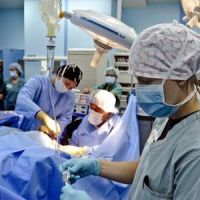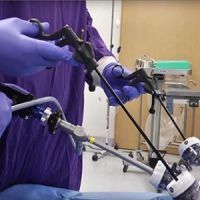In its second year of implementation, the Perioperative Surgical Home (PSH) model of care led to improved quality of care and more cost savings for knee or hip replacement patients at the University of California, Irvine School of Medicine. The findings, presented at the ANESTHESIOLOGY® 2015 annual meeting, show that the PSH is a viable and beneficial model of care for patients, according to researchers at UC Irvine.
Evidence of long-term sustainability of the PSH model is important for groups such as UC Irvine which anticipate extending the PSH to other specialty areas. “Our study highlights that for joint replacement patients it [PSH] is highly successful and now we can look to use it in other areas,” says Leslie Garson, MD, co-author of the study and associate clinical professor, Department of Anaesthesiology and Perioperative Care, UC Irvine.
The PSH is an innovative patient-centred, physician-led, multidisciplinary team-based model of coordinated care. In the PSH, a patient’s entire surgical experience -- preoperative, intraoperative and post-discharge -- is treated as a continuum of care. This care approach puts emphasis on lead physician, multi-specialty team and patient shared decision-making, as well as the cost-efficient use of resources.
For this study, Dr. Garson and colleagues reviewed data from 328 patients who had elective knee or hip replacement surgery in UC Irvine’s PSH programme between 1 October 2012 and 30 September 2014. The team reviewed different care quality indicators, including length of stay (LOS), discharge location, 30-day readmission rate and postoperative pain scores.
Results show that, over the two-year period, LOS was significantly lower in the second year of the PSH. By patient group, LOS was much lower for hip replacement patients in the second year, decreasing by 28 percent, while the median LOS did not differ for knee surgery patients between the two years. In addition, the percentage of hip replacement patients going home, rather than to a skilled nursing facility, nearly doubled (from 17.6 percent to 32.9 percent) in the second year compared to the first year. Readmission rates and postoperative pain scores did not change significantly between the first and second year of the PSH.
“In today’s healthcare environment," Dr. Garson says, "it’s especially satisfying to be part of a model of care that is achieving the triple aim of better health, better healthcare and lower costs.”
Source: American Society of Anesthesiologists
Image credit: Slideshare.net
Evidence of long-term sustainability of the PSH model is important for groups such as UC Irvine which anticipate extending the PSH to other specialty areas. “Our study highlights that for joint replacement patients it [PSH] is highly successful and now we can look to use it in other areas,” says Leslie Garson, MD, co-author of the study and associate clinical professor, Department of Anaesthesiology and Perioperative Care, UC Irvine.
The PSH is an innovative patient-centred, physician-led, multidisciplinary team-based model of coordinated care. In the PSH, a patient’s entire surgical experience -- preoperative, intraoperative and post-discharge -- is treated as a continuum of care. This care approach puts emphasis on lead physician, multi-specialty team and patient shared decision-making, as well as the cost-efficient use of resources.
For this study, Dr. Garson and colleagues reviewed data from 328 patients who had elective knee or hip replacement surgery in UC Irvine’s PSH programme between 1 October 2012 and 30 September 2014. The team reviewed different care quality indicators, including length of stay (LOS), discharge location, 30-day readmission rate and postoperative pain scores.
Results show that, over the two-year period, LOS was significantly lower in the second year of the PSH. By patient group, LOS was much lower for hip replacement patients in the second year, decreasing by 28 percent, while the median LOS did not differ for knee surgery patients between the two years. In addition, the percentage of hip replacement patients going home, rather than to a skilled nursing facility, nearly doubled (from 17.6 percent to 32.9 percent) in the second year compared to the first year. Readmission rates and postoperative pain scores did not change significantly between the first and second year of the PSH.
“In today’s healthcare environment," Dr. Garson says, "it’s especially satisfying to be part of a model of care that is achieving the triple aim of better health, better healthcare and lower costs.”
Source: American Society of Anesthesiologists
Image credit: Slideshare.net
Latest Articles
healthmanagement, surgery, knee surgery, PSH model, hip replacement, perioperative care
In its second year of implementation, the Perioperative Surgical Home (PSH) model of care led to improved quality of care and more cost savings for knee or hip replacement patients at the University of California, Irvine School of Medicine. The findings w



























